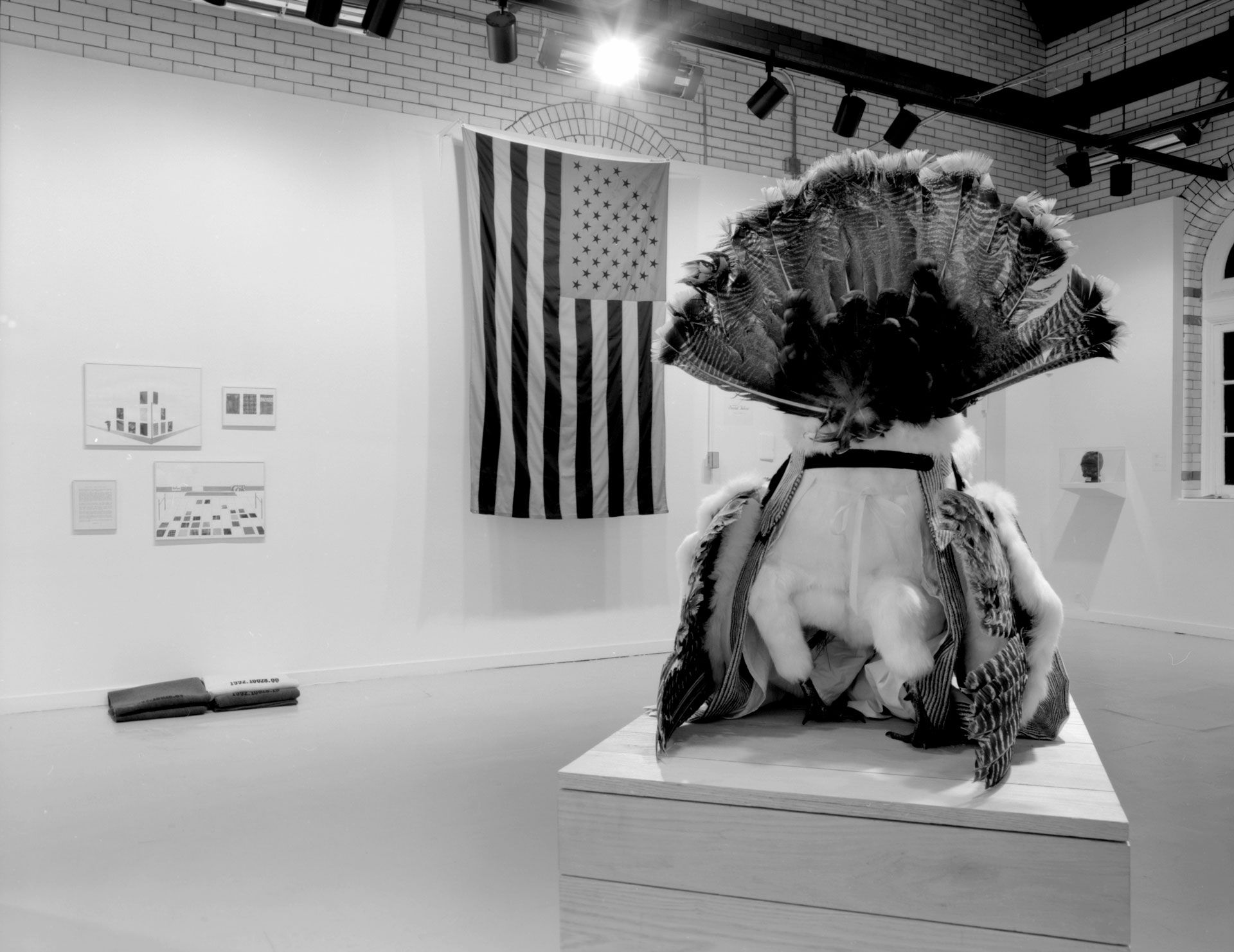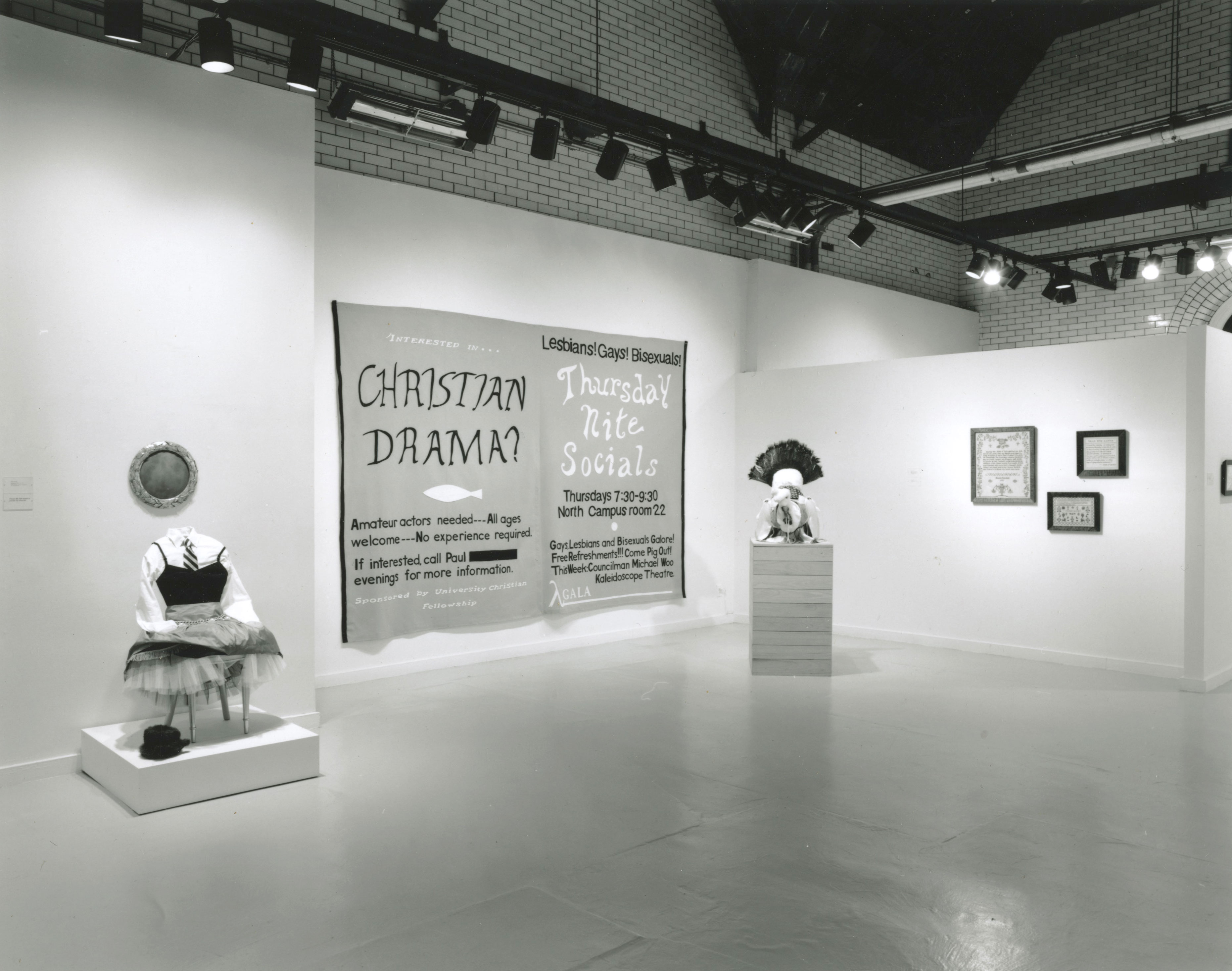November 9 — December 20, 1994
Beaver College Art Gallery
The Beaver College Art Gallery is pleased to present “The Social Fabric,” a thematic exhibition that includes emerging and established artists who have made substantial bodies of work using cloth as both a medium and metaphor for the complex interweaving of objects and values in our society, November 9 through December 20. The exhibition is free and open to the public.

Installation view, “The Social Fabric,” Beaver College Art Gallery
Stuart Netsky, one of the featured artists in “The Social Fabric,” will present a new performance titled “Fake Fur” on Wednesday, November 9 at 6:30 PM in Beaver College’s Little Theater. Members of the community are invited to attend the performance and a reception immediately following “Fake Fur” in the Art Gallery. Admission is free.
Netsky combines the worlds of interior decoration, domestic handicrafts, high fashion and art in a work that is simultaneously camp, gorgeous and touching, and often bends or crosses gender lines. Netsky recently had a one-person exhibition at the Institute of Contemporary Art and has been included in numerous shows in New York, Boston and Philadelphia.
Artists featured in “The Social Fabric” often incorporate the fabrics and techniques associated with handicrafts and the domestic arts such as knitting, sewing, embroidery within the realm of fine art. They do so not to glorify “craft” but to use its vocabulary as a vehicle to address larger cultural issues as well as historical and social themes. Participating artists include Polly Apfelbaum, Renee Green, Michael Jenkins, Donald Moffet, Lois Nesbitt, Elaine Reichek, David Robbins and Meyer Vaisman, all of New York; David Hammond, of Italy; Mike Kelley, of Los Angeles; Stuart Netsky, of Philadelphia; Jana Sterbak, of Montreal; and Rosemarie Trockel, of Germany.

Installation view, “The Social Fabric,” Beaver College Art Gallery
Indebted to arte povera, conceptualism and feminine discourse, the two and three dimensional objects in “The Social Fabric,” such as samplers, banners, pillows, costumes, blankets, and a stuffed turkey, challenge the traditional heroic notions of the medium usually of fine art. Of equal significance, this kind of ephemeral fragile work is made as much by male as by female artists. For women, such efforts both elevate and subvert traditional ideas of “women’s work.” For men, this shows a deliberate crossing of the border of assigned gender roles. For both genders, these works draw upon the commonality of social experience expressed by cloth, as they straddle the gap between high and low, fine and applied art, and home and the world.
“This kind of work is strongly indicative of our moment’s social and artistic struggles,” notes Gallery Director Paula Marincola, “and such warrants examination and analysis. In addition, further suggesting the timeliness and relevance of our show.”
A catalog will be forthcoming documenting “The Social Fabric.” The catalog and exhibition have both been funded by the Arcadia Foundation, the National Endowment for the Arts in Washington D.C., a public agency, the Pennsylvania Council on the Arts and the Friends of the Beaver College Art Gallery.
